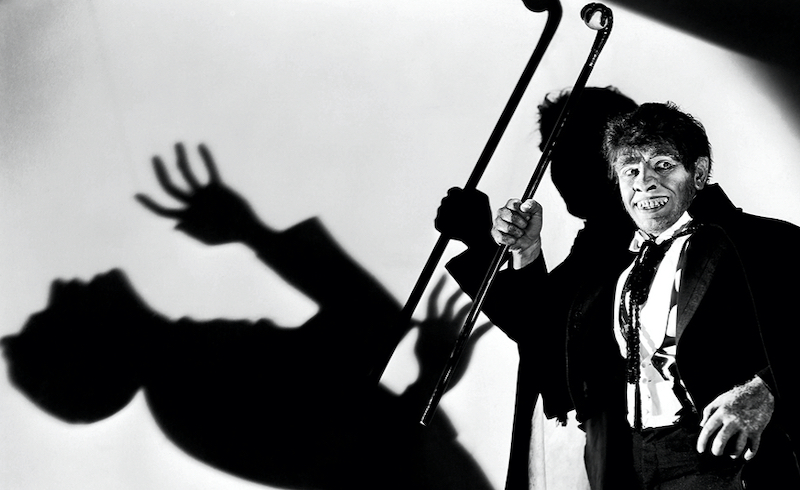Dr. Jekyll and Mr. Hyde have long been associated with multiple personality disorder and the inner struggle between good and evil.
These famous characters come from Robert Louis Stevenson’s penny dreadful novella “Strange Case of Dr. Jekyll and Mr. Hyde,” first published in 1886.
In a more focused sense, Stevenson was writing about a split personality or a dual personality. But what are the hidden Mr. Hyde parts of who we are, really?
Stevenson created a hero in Dr. Jekyll, who was aware of the evil in his own being, and sick of the duplicity in his life. He succeeds by way of experiments on himself in freeing the pure evil part of his being as Hyde, so that each can indulge in a life unfettered by the demands of the other.
In our real everyday lives, separating parts of who we are becomes infinitely more complicated than simply taking a potion.
In general, human beings present to the world a “persona.” C. G. Jung saw this as the part of ourselves that we present as amiable, personable, civilized, agreeable and relational — in most cases a genuine part of our natures as good respectable citizens.
Yet the less attractive parts of our personalities remain hidden and suppressed, as they are deemed unacceptable by society and even by our loved ones. These parts are confusing to us. Often we feel guilty when they emerge; we’re shamed by others for their very existence. So often the chance to explore and understand our “shadow sides” sadly becomes buried.
This could be perceived as the flip side of our duality. But why does duality even exist and where does it come from?
Rollo May, the existential psychologist, was an advocate for “conjuring the demons,” bringing out parts of ourselves to be whole, the parts of ourselves we judge and reject. Without wholeness, he asked, how do we begin to live with all of who we are?
If we conceal the flip side, we also may never discover the buried treasures that lie beneath. Instead of viewing our pain through a lens of compassion and contextual awareness, controlling, self-centered, even sociopathic behaviors may result.
Many commentaries and papers have been written dissecting the evil that eventually dominated Dr. Jekyll, an amiable and kind man whose hidden side ultimately wreaked havoc in his life. From a depth perspective in psychology, Hyde became a dominant force for Jekyll. By separating out the unacceptable parts of himself, Jekyll prevented an opportunity for a reflective relational contextual understanding of who he is or why he existed.
In religion and philosophy
“A religion that is dualistic admits not only that the universe (is composed of) good and evil, or light and darkness, but also that though these are eternally opposed they are coeternal, coexistent and equipotent,” said Shubh Singh and Subho Chakrabarti, writing in the Indian Journal of Psychiatry. “This is an important distinction from nondualist, monistic religions where evil comes about as an accident during creation of the universe or because of powerful beings that can be good or bad as per what serves them or injures them and not because they are evil for the sake of being evil.”
Plato was strongly dualistic in that he expressed the view that the soul exists independently of the body. The rational soul is a spiritual substance distinct from the body within which it dwells, much like the chariot and a charioteer.
Dualism served a great purpose in the European Renaissance when Descartes described the mind exclusively as a substance that thinks and matter exclusively as an extended substance.
In the early 1900s, however, Sigmund Freud developed the theory of instincts in relation to the concept of libido and the consequent foundation of the psychosexual phases of development. Aggression as a component of the foundational drives became increasingly important and could not be ignored. It was therefore elevated to the status of a separate instinct. It was further realized that humans were neither exclusively nor essentially good. Freud introduced his final theory of life and death instincts in 1920. He postulated that the death instinct is the dominant tendency of all organisms and their cells to return to a state of inanimateness.
Debunking the death wish
Dr. Robert D Stolorow, co-originator of intersubjective theory, however, argued from the perspective of German philosopher Martin Heidegger that “man is steeped in mood,” in other words that powerful and passionate emotions are the basis for all that motivates him. Contrary to Descartes’ “I think therefore I am,” Stolorow described the Cartesian isolated mind, a state of being that excludes emotions and the importance of relationships.
Stolorow challenges Freud’s “death wish” as misguided myth. Stolorow suggests that rather than a death wish, man has a deep wish to relate and be related with, and when this is absent, his only option is to destroy the unbearable pain of loneliness by taking his own life. This he posits results from the lack of what he called a relational home.
Dr. Jekyll and Mr. Hyde became a sad duality. One never knowing the other as over time they grew further and further apart until Hyde, who arguably possessed the riches and treasures of the pain of Jekyll’s existence, never brought to conscious awareness the sadness of this dual existence, which deeply sought a relational home.
Our opposites must meet and engage in an inner conversation — to consider our thoughts, our losses and unmet longings — in order become whole. The integration of who we are and who we are to become depends on this. When we embrace ourselves without judgment, the Dr. Jekylls and Mr. Hydes who lurk within may very well be able to coexist without injury to ourselves or anyone else.
